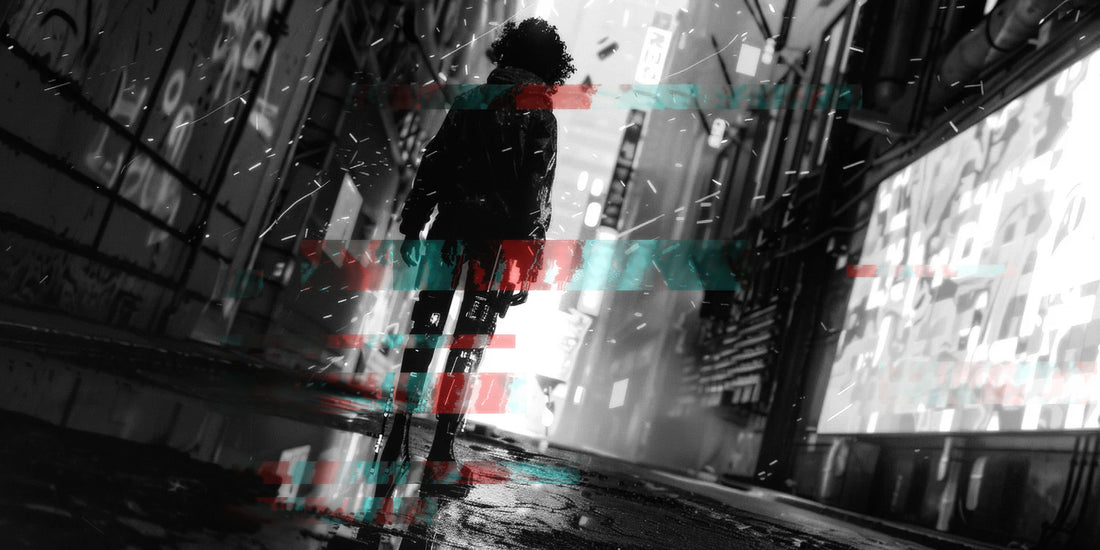Culture Wars: Cyberpunk Idealism Versus Realism

Cyberpunk, as a genre and cultural movement, has long been a battleground between idealism and realism. This clash is reflected in the vibrant fashion trends, artistic expressions, and societal attitudes inspired by the cyberpunk ethos. By examining these opposing perspectives, we can gain insight into how they shape our understanding of the future, technology, and personal identity.
Cyberpunk Idealism
The Utopian Vision
Cyberpunk idealism paints a picture of a future where technology enhances human capabilities, breaks down societal barriers, and creates new forms of self-expression. This vision is often characterized by a utopian belief in the power of technology to transform lives for the better.
Influence on Fashion
Idealistic cyberpunk fashion often features sleek, futuristic designs with a focus on individuality and self-expression. Examples include:
- Form-fitting suits with LED accents.
- High-tech fabrics designed for both aesthetics and functionality.
- Bold, innovative silhouettes that symbolize the integration of technology and human life.
Artistic Expression
Artists inspired by cyberpunk idealism create works that celebrate technological advancements and their potential to create a harmonious future. These pieces often feature:
- Bright colors and clean lines.
- Optimistic themes that reflect a hopeful outlook on humanity's technological evolution.
Cyberpunk Realism
The Dystopian Reality
In contrast, cyberpunk realism is grounded in a more pessimistic view of the future. It highlights the potential dangers of unchecked technological advancement, such as corporate control, surveillance, and social inequality. This perspective is often depicted in dystopian settings where technology exacerbates societal issues rather than solving them.
Influence on Fashion
Realistic cyberpunk fashion embraces a grittier, more utilitarian aesthetic. Key features include:
- Distressed fabrics and layered clothing.
- Functional accessories designed for survival and practicality.
- A focus on rugged individuality and resistance to oppressive systems.
Artistic Expression
Artists who adopt a realistic cyberpunk approach often explore themes of decay, corruption, and resistance. Their works are characterized by:
- Darker tones and chaotic compositions.
- A focus on the struggles of marginalized individuals in a technologically dominated world.
The Intersection of Idealism and Realism
Blurring the Lines
Despite their differences, cyberpunk idealism and realism are not mutually exclusive. Many creators and fashion designers blend elements of both perspectives, creating a nuanced vision of the future. This intersection allows for a richer exploration of the complexities of technological progress and its impact on society.
Fashion as a Reflection
In fashion, this blend is seen in designs that combine futuristic elements with practical, rugged features. For example:
- A sleek, high-tech jacket paired with distressed jeans and heavy boots, symbolizing the balance between hope and realism.
Art and Society
In art, this intersection is reflected in pieces that juxtapose bright, futuristic imagery with darker, more chaotic elements. These works challenge viewers to consider the dual nature of technology as both a tool for progress and a potential source of oppression.
Conclusion
The cultural debate between cyberpunk idealism and realism offers valuable insights into our collective hopes and fears about the future. By examining how these perspectives influence fashion, art, and societal attitudes, we can better understand the complexities of our relationship with technology.
Whether you lean towards the utopian vision or the dystopian reality, embracing both sides of the cyberpunk ethos can inspire a more balanced and thoughtful approach to the future.








